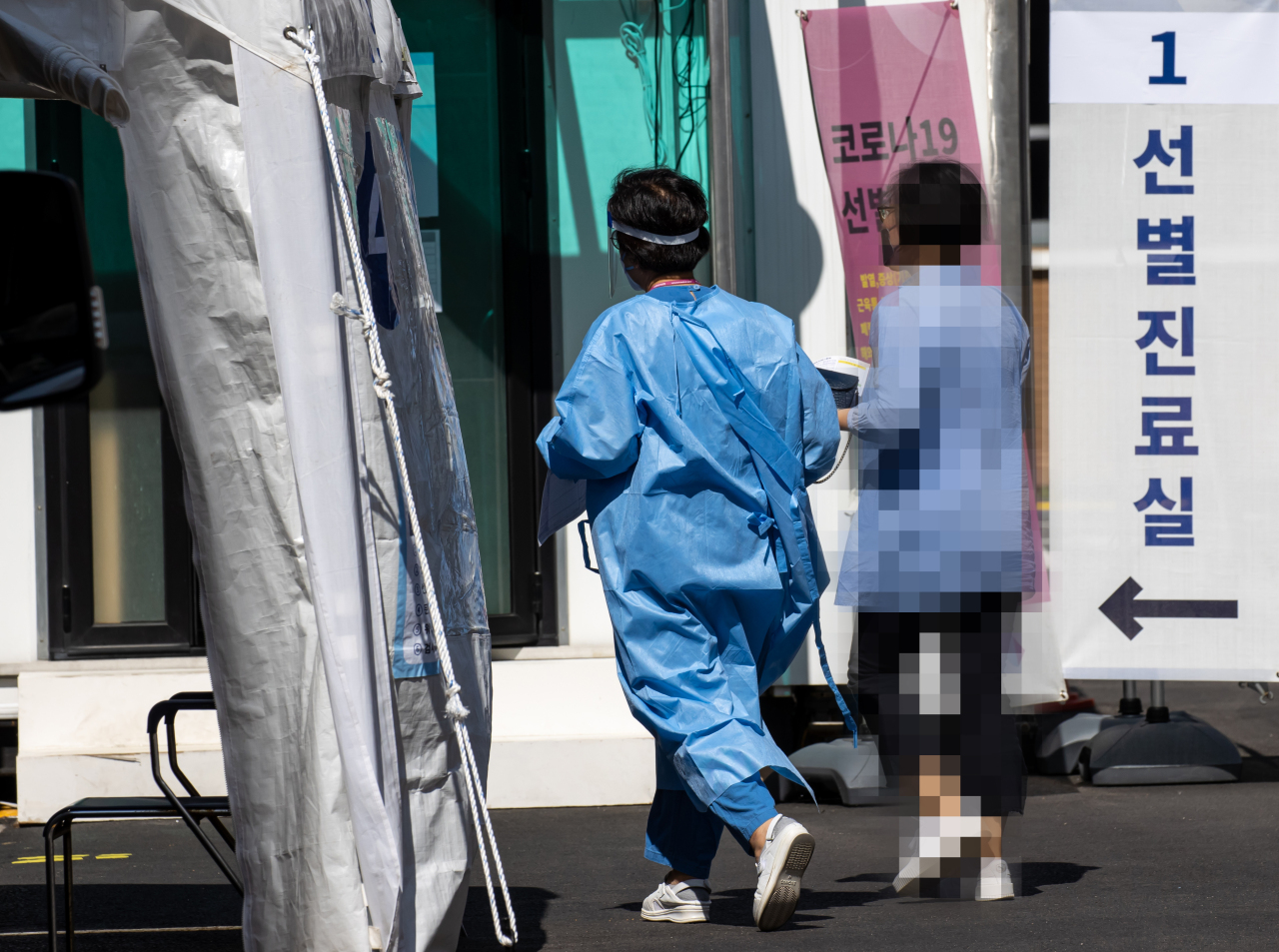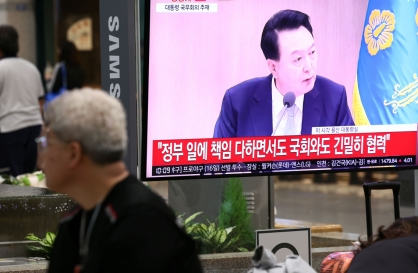S. Korea sees lowest single-day rise in COVID-19 cases since Aug. 11
Health authorities confirmed that three people had caught both flu and the new coronavirus in Korea
By Ock Hyun-juPublished : Sept. 28, 2020 - 09:37

South Korea’s new daily COVID-19 case count dropped to 50 Monday, the lowest in 48 days, as the country strives to prevent a rebound in coronavirus infections over the Chuseok holiday.
Of the 50 new COVID-19 cases reported in the 24 hours ending Sunday at midnight, 40 were locally transmitted and 10 were imported, according to the Korea Disease Control and Prevention Agency.
Health authorities, meanwhile, confirmed that three individuals in Korea had been infected with influenza and the new coronavirus simultaneously early this year, adding to fears over a possible “twindemic” in autumn and winter.
The three cases were reported in Daegu and North Gyeongsang Province, the epicenter of the country’s first wave of coronavirus cases, at the end of February before the flu season ended, KDCA chief Jung Eun-kyeong said at a briefing Monday. The three were never in serious condition, she added.
The extended holiday, which runs from Sept. 30 to Oct. 4, is expected to be a critical point in the country’s autumn virus fight as a mass movement of people could heighten the risk of community spread of COVID-19.
Prime Minister Chung Sye-kyun a day earlier reiterated his appeal to people not to visit their hometowns during this year’s Chuseok holiday, saying we are in a “quasi-war” situation.
Despite the government’s urging to stay home, nearly 1 million people are expected to use domestic airports, excluding Incheon International Airport, and travel by air during the holiday, according to the Korea Airports Corp.
The drop in new cases might not mean that the virus situation is under control, given continued sporadic clusters of infections, untraceable cases, and the statistical effect of fewer COVID-19 tests being carried out over the weekend.
Clusters of infections continue to be reported from workplaces, nursing homes and day care centers largely in the Seoul metropolitan area, home to nearly half of the country’s population.
Sources of infection for 20.9 percent of the new cases reported from Sept. 15-28 remain unknown, which puts the government on alert over the potential for the virus to spread undetected in the community.
Of Monday’s locally transmitted cases, the vast majority were in Greater Seoul -- 19 in Seoul, one in neighboring Incheon and 13 in Gyeonggi Province, which surrounds the capital. Outside the Seoul area, three cases were reported in North Gyeongsang Province and one each in Busan, Ulsan, and Gangwon and North Chungcheong provinces.
Starting Monday, tougher coronavirus restrictions were put in place in some areas.
During the period from Sept. 28 to Oct. 11, designated as a special quarantine period, Level 2 social distancing rules will remain in place across the nation, with gatherings of more than 50 people indoors or 100 people outdoors prohibited and sporting events being held without spectators.
In the Seoul metropolitan area, 11 types of high-risk businesses, including nightclubs and karaoke rooms, will not be allowed to operate. Outside the capital region, five types of high-risk facilities are to be shut down for a week.
Triggered by mass infections linked to a Seoul-based church and an Aug. 15 rally, Korea saw triple-digit gains in coronavirus cases for 37 days in a row, with a peak of 441 cases on Aug. 27. The daily tally fell below 200 on Sept. 3.
The average number of daily COVID-19 cases was 218.4 from Aug. 30-Sept. 5, but fell to 134.6 from Sept. 6-12 and to 107.4 from Sept. 13-19. From Sept. 20 to 26, 75.6 cases were reported per day on average.
Of Monday’s 10 imported cases, three were identified while the individuals were under mandatory self-quarantine in Korea, with the other seven detected during the quarantine screening process at the border. Eight came from elsewhere in Asia, including two from Uzbekistan. One case was from Turkey and one was from Canada. Three of the imported cases involved foreign nationals.
The number of COVID-19 patients in serious or critical condition was 120 as of Monday.
Five more people died from the virus, bringing the death toll to 406. The overall fatality rate stands at 1.72 percent -- 1.99 percent for men and 1.48 percent for women.
So far, of the 23,661 people confirmed to have contracted the new coronavirus here, 21,292 people have been released from quarantine upon making full recoveries, up 44 from a day earlier. Some 1,963 people are receiving medical treatment under quarantine.
The country carried out 4,786 tests in the past day, with a total of 2,301,303 tests conducted since Jan. 3. Some 18,587 people were awaiting results as of Monday.
By Ock Hyun-ju (laeticia.ock@heraldcorp.com)
-
Articles by Ock Hyun-ju







![[From the Scene] Monks, Buddhists hail return of remains of Buddhas](http://res.heraldm.com/phpwas/restmb_idxmake.php?idx=644&simg=/content/image/2024/04/19/20240419050617_0.jpg&u=20240419175937)








![[From the Scene] Monks, Buddhists hail return of remains of Buddhas](http://res.heraldm.com/phpwas/restmb_idxmake.php?idx=652&simg=/content/image/2024/04/19/20240419050617_0.jpg&u=20240419175937)

![[KH Explains] Hyundai's full hybrid edge to pay off amid slow transition to pure EVs](http://res.heraldm.com/phpwas/restmb_idxmake.php?idx=652&simg=/content/image/2024/04/18/20240418050645_0.jpg&u=20240419100350)

![[Today’s K-pop] Illit drops debut single remix](http://res.heraldm.com/phpwas/restmb_idxmake.php?idx=642&simg=/content/image/2024/04/19/20240419050612_0.jpg&u=)